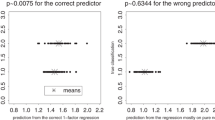Abstract
Morphometry is the science of measuring two-dimensional and three-dimensional aspects and parameters of object morphology, including size, shape, and tomography. Compared to conventional measurement, computer-assisted morphometry is exponentially faster, more accurate, more precise, and more efficient while providing a substantially broader spectrum of measurements of morphological parameters. Objective quantification replaces subjective, perception-based typology in the analysis of variation.
Morphometric data from seed reference populations representing more than 1,000 taxa were used to study patterns of morphological variation and to assess related analytical assumptions and basic protocols. Many assumptions about the nature of seed morphology were found suspect and current minimum standards for representative reference seed types and control populations are inadequate and unreliable.
Standard plots of area size distributions of wild and domestic seed populations revealed a consistent difference in histogram shape. Conventional descriptive statistical values were insensitive to the differences. Subjecting the histograms to morphometric shape measurements revealed specific shape factors that provided consistent values sensitive to the difference. A new quantitative method for distinguishing wild and domestic seed populations based on measurements of the shape of the distribution of morphological variation, rather than on typology or increase in mean size, was developed and initially tested. It is potentially applicable to the assessment of archaeological seed assemblages in studies of the history of ethnobotany and especially agriculture
Similar content being viewed by others
Literature Cited
Corner, E. J. H. 1976. The Seeds of dicotyledons, Cambridge University Press, Cambridge, UK and New York.
Decker, D. and H. D. Wilson. 1986. Numerical analysis of seed morphology inCucurbita moschata. Systematic botany 11 (4):595–607.
Draper, S. R. and A. J. Travis. 1984. Preliminary observations with a computer based system for the analysis of shapes of seeds and vegetative structures. Journal of the national institute of agricultural botany 16:387–95.
Gunn, C. R. and L. Lasota. 1978. Automated identification of true and surrogate seeds. Biosystematics in agriculture 2:241–57.
Gunn, C. R. and M. J. Seldin. 1977. Preparing seed and fruit characters for a computer with discussion of five useful programs. Seed science and technology 5:1–40.
Martin, A. and W. Barkley. 1961. Seed identification manual. University of California Press, Berkeley, CA.
Montgomery, F. H. 1977. Seeds and fruits of plants of Eastern Canada and Northeastern United States. University of Toronto Press, Toronto and Buffalo.
Rovner, I. 1992. Darwin and design in phytolith systematics: Morphometric methods for mitigating redundancy. Pages [253–276] in S. C. Mulholland and G. R. Rapp, eds., Phytolith systematics: Emerging issues. Plenum Press, New York.
-. 1995. Complex measurements made easy: Morphometric analysis of artefacts using expert vision systems." Chapter 5 in J. Wilcock and K. Lockyear, eds., Computer applications and quantitative methods n archaeology 1993. British Archaeological Reports (BAR) International Series 598, Oxford, UK.
Russ, John C. 1989. Computerized object recognition using contextual learning. Journal of computer-assisted microscopy 1:105–129.
—. 1990. Computer-assisted microscopy: The measurement and analysis of images, Plenum Press, New York.
—. 1994. Fractal surfaces. Plenum Press, New York.
—. 2002. The Image Processing Handbook, 4th edition, CRC Press, Boca Raton, FL.
— and R. T. DeHoff. 2002. Practical stereology, 2nd edition, Plenum Press, New York.
Russ John C. and I. Rovner. 1989a. Expert vision systems in archaeometry: Rapid morphometric analysis of chaotic form, shape and structure. Materials research society bulletin: Microscopy for the archaeologist 14(3):140–144.
—. 1989b. Stereological identification of opal phytolith populations from wild and cultivatedZea mays. American antiquity, 54(3):784–792.
Schermann, S. 1966. A Magismeret Atlasza, Mezögazdas-g Könyvkiad, Budapest.
Travis, A. J. and S. R. Draper. 1985. A computer based system for the recognition of seed shape. Seed science and technology 13:813–820.
Willcox, G. 2004. Measuring grain size and identifying Near Eastern cereal domestication: Evidence from the Euphrates valley. Journal of archaeological science 31:145–150.
Author information
Authors and Affiliations
Corresponding author
Rights and permissions
About this article
Cite this article
Rovner, I., Gyulai, F. Computer-assisted morphometry: A new method for assessing and distinguishing morphological variation in wild and domestic seed populations. Econ Bot 61, 154–172 (2007). https://doi.org/10.1663/0013-0001(2007)61[154:CMANMF]2.0.CO;2
Received:
Revised:
Issue Date:
DOI: https://doi.org/10.1663/0013-0001(2007)61[154:CMANMF]2.0.CO;2




